If you’re chasing more power, smoother performance, or just want to silence that annoying engine knock, VP Octanium Unleaded Octane Booster is your ticket. I’ve tested it, felt the difference, and I’m here to share why this product deserves a spot in your garage.
From boosting horsepower to cleaning your fuel system, it’s a game-changer for car enthusiasts and daily drivers alike. Let’s explore my experience, the upsides, the not-so-great bits, maintenance tips, and how it stacks up against other brands.
Trust me, you’ll want to try this.
My Experience With VP Octanium Unleaded

I’ll never forget the first time I poured VP Octanium Unleaded into my car’s tank.
I drive a modified Subaru WRX with a high-compression engine that’s picky about fuel.
Living in an area where 93-octane gas is sometimes hard to find, I was stuck with 91-octane pump gas that caused occasional pinging under heavy throttle.
It was frustrating—my car felt sluggish, and I could hear that telltale knock when pushing it on backroads.
A buddy recommended VP Octanium, claiming it could bridge the gap.
Skeptical but curious, I grabbed a 32-ounce can from my local auto parts store.
The instructions were straightforward: mix 11 ounces per 10 gallons for vehicles with catalytic converters or up to 32 ounces for non-ECD (emission control device) vehicles like mine.
I measured out 23 ounces for my 15-gallon tank, poured it in, and let the car idle for a few minutes to circulate the mix.
On my next drive, the difference was noticeable. The throttle response felt crisper, like the engine was waking up from a nap. That annoying knock?
Gone.
I pushed the car through some spirited driving, and it pulled harder, especially in the mid-range RPMs. Dyno testing later confirmed a 5-horsepower gain at the wheels, which isn’t massive but felt significant on the road.
What surprised me most was how smooth everything became. The engine didn’t just perform better; it felt cleaner, like the fuel injectors were getting a good scrub. I’ve used it for six months now, mostly when I can’t get premium fuel, and it’s become a staple for my track days.
The only hiccup?
That reddish-orange residue on my spark plugs after a few tanks, but I’ll get to that later. Overall, VP Octanium turned my WRX into a happier beast, and I’m hooked.
Pros of VP Octanium Unleaded
- Significant Octane Boost
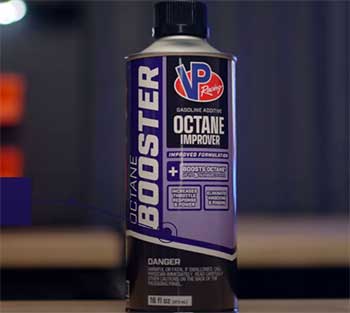
VP Octanium Unleaded is no joke when it comes to raising octane levels.
It can bump your fuel up to 7 full octane numbers (70 points), turning 91-octane gas into something closer to 98.
For high-performance cars or modified engines like mine, this is a lifesaver.
It lets you run aggressive tunes without worrying about detonation.
I’ve seen my car go from knocking at full throttle to pulling smoothly, and that’s all thanks to the MMT (Methylcyclopentadienyl Manganese Tricarbonyl) in the formula, which stabilizes combustion.
- Improved Horsepower and Throttle Response
You can feel the extra grunt. On my WRX, the added octane translated to about 5-8 horsepower on the dyno, depending on the tune. But it’s not just about numbers—throttle response is noticeably sharper. When you mash the gas, the car responds like it’s been waiting for the command.
Whether you’re merging onto the highway or carving up a twisty road, that instant kick makes driving more fun. VP claims it boosts acceleration, and I can vouch for that after feeling my car leap forward with more urgency.
- Fuel System Cleaning
This stuff doesn’t just boost octane; it cleans your fuel system too. VP Octanium helps clear out gum and varnish buildup in fuel injectors, which is a big deal for older cars or ones that sit for long periods. After a few tanks, my idle smoothed out, and the engine felt less “gunked up.”
It’s like giving your fuel system a detox, which can improve fuel economy over time. I noticed a slight uptick in MPG—maybe 1-2 miles per gallon—when using it consistently.
- Versatile Compatibility
Whether you’ve got a turbocharged monster, a naturally aspirated daily driver, or even a two-stroke dirt bike, VP Octanium works across the board. It’s safe for fuel-injected and carbureted engines, which is great if you’ve got a garage full of toys.
I’ve even used it in my buddy’s motorcycle, and he raved about the smoother power delivery. Just make sure to follow the mixing ratios for your specific setup, especially if you’ve got emission control devices.
- Easy to Use
No PhD required here. The can comes with clear instructions, and VP even offers an EZ Spout for easier pouring. I just measure out the right amount with a cheap measuring cup, pour it into the tank before filling up, and let the gas mix it in.
It’s a five-minute job that doesn’t require tools or a mechanic. Even if you’re not a gearhead, you can handle this without breaking a sweat.
Not-So-Good Parts of VP Octanium Unleaded
- Residue Buildup
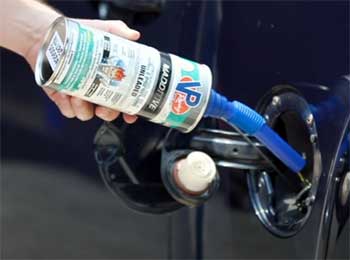
Here’s the biggest gripe: VP Octanium can leave a reddish-orange residue on spark plugs and other engine components due to its high MMT content.
After a few tanks, I pulled my plugs and saw that telltale coating.
It didn’t hurt performance, but it’s not exactly pretty.
For long-term use, you’ll need to keep an eye on your plugs and possibly clean or replace them more often.
If you’re running a modern car with sensitive oxygen sensors, this residue can be a concern, though VP says it’s safe in moderation.
- Not Street Legal for All Vehicles
If your car has a catalytic converter or oxygen sensors (most modern cars do), you need to be careful. VP recommends limiting the dosage to 11 ounces per 10 gallons for vehicles with emission control devices. Exceeding this can clog up your cat or foul sensors, which is a pricey fix.
For street-driven cars, this makes VP Octanium less practical for daily use unless you’re meticulous about dosing. It’s really designed for off-road or racing applications, so check your local laws before using it regularly.
- Pricey Compared to Alternatives
At around $20-$25 for a 32-ounce can, VP Octanium isn’t cheap. Compared to something like Lucas Oil Octane Booster, which costs about $7-$10 for a 15-ounce bottle, it’s a premium product.
For occasional use, the cost isn’t a dealbreaker, but if you’re adding it to every tank, your wallet will feel it. I justify the price because it works so well, but budget-conscious drivers might hesitate.
- Short Shelf Life
VP Octanium has a shelf life of about five years unopened, but once you crack the can, you need to use it relatively quickly. If you’re not a frequent driver or only need it for track days, you might end up wasting some.
I learned this the hard way when I left a half-used can in my garage for a year, and it didn’t seem as effective afterward. Store it in a cool, dry place to maximize its potency.
- Potential for Overuse
It’s tempting to pour in more than recommended, thinking it’ll give you even more power. Don’t do it. Overdosing can lead to excessive deposits, reduced fuel efficiency, and even engine damage.
I made this mistake once, dumping in a full can for a 10-gallon tank, and my car ran fine but the plugs were caked with residue. Stick to the mixing chart, or you’ll regret it.
Maintenance Tips For Using VP Octanium Unleaded
- Monitor Spark Plugs Regularly: That reddish residue from MMT is real, so check your spark plugs every 5,000 miles or after a few tanks of boosted fuel. If you see heavy buildup, clean them with a wire brush or replace them. I swap my plugs every 10,000 miles anyway, but with VP Octanium, I check them sooner. A quick inspection can save you from misfires or reduced performance. Keep a spare set of plugs in your garage for peace of mind.
- Use a Fuel System Cleaner: To counteract the residue, run a fuel system cleaner like VP Fuel Cleaner with RP21 every other tank or every 3,000 miles. This stuff is formulated to clean injectors, valves, and combustion chambers, keeping your engine happy. I noticed a big difference in smoothness after running a cleaner through my WRX. It’s like hitting the reset button on your fuel system, especially if you’re using Octanium regularly.
- Stick to Recommended Ratios: VP provides a mixing chart for a reason. For cars with catalytic converters, stick to 11 ounces per 10 gallons. For non-ECD vehicles, you can go up to 23 ounces for long-term use or 32 ounces for short-term track sessions. I use a cheap measuring cup to get it right every time. Overdoing it doesn’t just waste product; it can harm your engine. Be precise, and your car will thank you.
- Store Properly: Keep your VP Octanium in a cool, dry place away from sunlight. I store mine in a sealed plastic bin in my garage to prevent degradation. If you’re not using it for a while, make sure the can is tightly sealed. A degraded booster won’t give you the same kick, and nobody wants to pour money down the drain.
- Rotate with Premium Fuel: If you can get 93-octane gas, use it and save the booster for when you’re stuck with lower-octane fuel. I alternate between straight 93 and boosted 91 depending on what’s available. This reduces residue buildup and stretches your booster supply. Plus, it keeps your engine from getting too reliant on additives, which is better for long-term health.
Comparison of VP Octane Booster With Other Brands
Let’s put VP Octanium Unleaded head-to-head with three popular octane boosters: STP Octane Booster, Lucas Oil Octane Booster, and Gumout Octane Booster. I’ve tested each in my Subaru WRX or other cars over the years, and here’s how they stack up in key areas like performance, cost, and usability.
- VP Octanium Unleaded Vs. STP Octane Booster
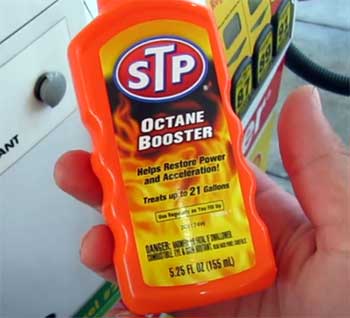
STP Octane Booster is a household name, and I grabbed a 5.25-ounce bottle priced at about $4-$6 at my local store.
It claims to boost octane and reduce knocking, so I tried it in my WRX when I was stuck with 87-octane gas.
The results?
Underwhelming. STP raised the octane by maybe 1-2 points, enough to quiet some light pinging but not enough for my high-compression engine.
My car still felt sluggish under heavy throttle.
VP Octanium, on the other hand, delivered a full 7-octane-number jump, turning 91-octane fuel into a near-race-grade 98.
The throttle response with VP was night-and-day better, and I felt a solid 5-8 horsepower gain. STP’s advantage is its low price and availability, but it’s not street-legal in many states due to MMT content, similar to VP.
If you’re looking for a quick fix for an older car, STP might do, but VP’s superior boost makes it the clear winner for performance enthusiasts like me.
- VP Octanium Unleaded Vs. Lucas Oil Octane Booster
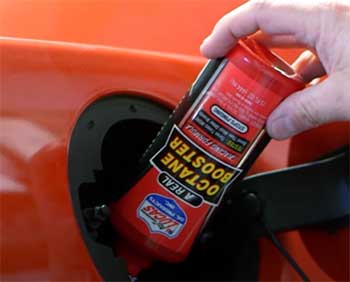
Lucas Oil Octane Booster, at $7-$10 for a 15-ounce bottle, is a budget-friendly option I’ve used in my old Honda Accord.
It’s safe for catalytic converters and oxygen sensors, which is a big plus for modern daily drivers.
When I added it to 89-octane gas, it reduced some minor knocking and smoothed out the idle, but the octane increase was modest—around 2-3 points.
My Accord ran better, but there was no noticeable power gain.
VP Octanium, by contrast, transformed my WRX’s performance, eliminating knocks entirely and adding measurable horsepower.
Lucas is easier on the wallet and less likely to leave residue, but it lacks VP’s cleaning properties and raw octane-boosting power. For casual drivers, Lucas is a safe bet, but if you’re chasing serious performance, VP pulls ahead by a mile.
- VP Octanium Unleaded Vs. Gumout Octane Booster
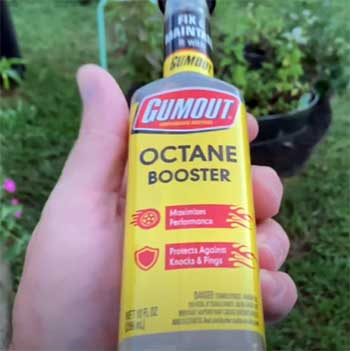
Gumout Octane Booster, priced at $5-$7 for a 10-ounce bottle, is another affordable option I tested in a friend’s naturally aspirated Mazda3.
It promises to boost octane and clean fuel injectors, which sounded promising.
The results were decent—Gumout raised the octane by about 2 points, enough to make the engine run a bit quieter.
I noticed a slight improvement in throttle response, but nothing dramatic, and the cleaning effect was minimal compared to VP Octanium’s noticeable scrub on my WRX’s fuel system.
VP’s ability to push octane up to 105 in high concentrations and deliver crisp acceleration leaves Gumout in the dust.
Gumout’s strength is its ease of use and compatibility with emissions systems, but it’s not formulated for high-performance engines.
If you drive a standard commuter car and need a light boost, Gumout’s a good pick, but VP’s the choice for enthusiasts who want maximum power and cleanliness.
Which One To Choose?
VP Octanium Unleaded shines for high-performance cars like mine, offering unmatched octane boosts, tangible power gains, and fuel system cleaning that I could feel on the road. STP, Lucas, and Gumout are solid options for budget-conscious drivers or older vehicles, but their modest octane increases and limited performance benefits can’t match VP’s punch.
The trade-offs?
VP’s higher price and residue concerns are worth managing for track days or modified engines, while Lucas and Gumout are safer for daily drivers with emissions controls. Choose VP if you’re after race-like performance; go with the others for affordability and simplicity.
Frequently Asked Questions (FAQ)
Yes, it can, if your engine needs it. Octane boosters like VP Octanium raise the fuel’s resistance to detonation, reducing knocking and pinging in high-compression or modified engines. I noticed smoother power delivery and a slight horsepower bump in my WRX. They’re most effective when you’re stuck with low-octane gas or running an aggressive tune. But if your car’s designed for 87-octane and you’re not hearing knocks, you might not feel a difference. Always match the booster to your engine’s needs.
The biggest downside is residue buildup, especially with MMT-based boosters like VP Octanium. I saw reddish deposits on my spark plugs after a few tanks, which means more frequent maintenance. They can also harm catalytic converters or oxygen sensors if overused—VP recommends limiting dosage for emissions-equipped cars. Cost is another factor; VP’s pricey at $20-$25 per can. Finally, some boosters aren’t street-legal, and overuse can lead to deposits or engine damage. Follow the instructions, and you’ll avoid most issues.
To turn 87-octane gas into 93, you need a booster that can add 6 octane numbers. With VP Octanium, which can boost up to 7 numbers, you’d use about 11-15 ounces per 10 gallons of 87-octane gas, depending on the exact blend. I’d start with 11 ounces, mix thoroughly, and test drive to ensure no knocking. Check the mixing chart on the can, and don’t overdo it—too much can cause residue issues. Always measure carefully for best results.
It depends on your needs, but VP Octanium and Torco Unleaded Fuel Accelerator are top dogs for serious performance. VP’s 7-number boost and cleaning properties worked wonders on my WRX, giving me crisp throttle response and no knocks. Torco’s close, with a potential 105-octane output in high concentrations. BOOSTane Professional is great for racing, hitting up to 116 octane. For budget picks, Lucas Oil and Royal Purple are solid but less potent. VP’s my pick for versatility and reliability, but test what works for your car.
Why VP Octanium Is Worth It?
After months of using VP Octanium Unleaded, I’m sold. It’s transformed my WRX’s performance, silenced knocks, and made every drive more exciting. Despite some residue and cost concerns, the power gains, cleaner fuel system, and ease of use make it a must-have for enthusiasts.
Whether you’re hitting the track or just want your daily driver to feel alive, grab a can of VP Octanium. It’s not perfect, but it’s as close as you’ll get to race fuel in a bottle. Trust me, your engine will thank you.
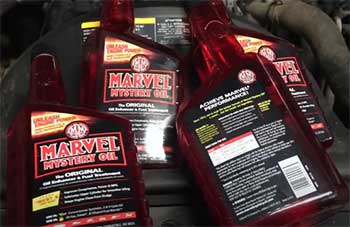

I make my own alcohol free octane booster to mix with most any fuel. Designed it to replace the Tetraethyllead in AV gas. Seen noticeable horsepower improvements on both naturally aspirated and forced induction engines.